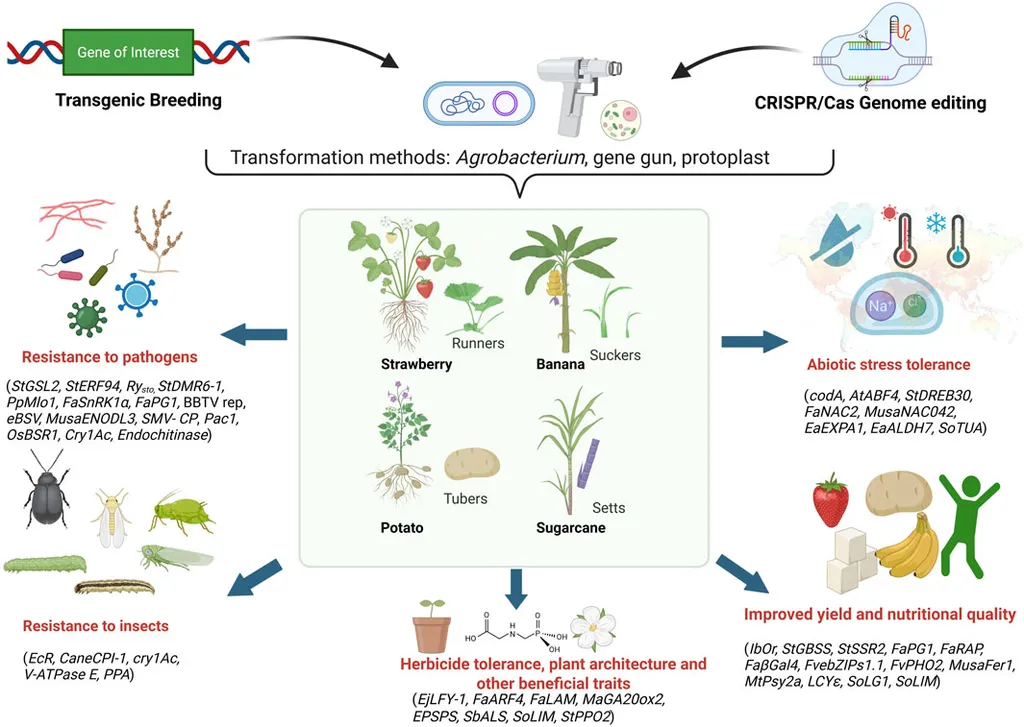In the ever-evolving landscape of agricultural biotechnology, a recent study published in *Agrotechniques in Industrial Crops* has shed new light on the phenophysiological traits of transgenic rapeseed lines, offering promising insights for the future of herbicide-resistant crops. The research, led by Amir Roeintan from the Department of Agronomy and Plant Breeding at the Islamic Azad University in Kermanshah, Iran, delves into the intricate world of genetic modification and its implications for crop resilience.
The study focuses on the aroA gene, a critical component in the synthesis of the enzyme 5-enolpyruvylshikimate-3-phosphate synthase (EPSPS), which is targeted by the widely used herbicide glyphosate. By inducing a point mutation (P101S) in the aroA gene of *E. coli* and subsequently transferring it to rapeseed, the researchers aimed to reduce the affinity of glyphosate to the EPSPS enzyme, thereby enhancing the plant’s resistance to the herbicide.
The experiment involved subjecting the transgenic rapeseed lines to various concentrations of glyphosate, ranging from 0 to 153.6 mM, and observing the resulting phenophysiological traits. The findings were intriguing, to say the least. “Different concentrations of herbicides exhibit varying degrees of phenophysiological traits, and desired traits can be improved based on these concentrations,” Roeintan noted, highlighting the nuanced relationship between herbicide exposure and plant development.
For instance, the control group, which received no herbicide, exhibited the lowest days to flowering, partial water pressure, active photosynthetic radiation, and leaf surface temperature. This suggests that while the transgenic lines are resistant to glyphosate, the herbicide’s presence can significantly influence the plant’s growth and development.
The concentration of 2.4 mM glyphosate showed the highest stomatal conductance and photosynthesis rate, indicating that a moderate level of herbicide exposure might actually enhance certain physiological processes. On the other hand, higher concentrations like 38.4 mM and 76.8 mM led to delayed flowering, increased leaf surface temperature, and reduced photosynthesis rate, underscoring the delicate balance that needs to be struck when using herbicides in agricultural settings.
The implications of this research for the agriculture sector are profound. As the demand for sustainable and efficient farming practices grows, the development of herbicide-resistant crops becomes increasingly important. “This study provides a foundation for future research into the optimization of herbicide use and the development of crops that can withstand higher levels of herbicide exposure without compromising their growth and yield,” Roeintan explained.
Moreover, the findings could pave the way for more targeted and precise use of herbicides, reducing the environmental impact and costs associated with weed management. By understanding how different concentrations of glyphosate affect the phenophysiological traits of transgenic rapeseed, farmers and agronomists can make more informed decisions about herbicide application, ultimately leading to improved crop yields and sustainability.
As the agricultural biotechnology field continues to evolve, studies like this one will play a crucial role in shaping the future of crop development and management. The research published in *Agrotechniques in Industrial Crops* by Amir Roeintan and his team offers a glimpse into the complex interplay between genetic modification, herbicide use, and plant physiology, providing valuable insights for the agriculture sector and beyond.

